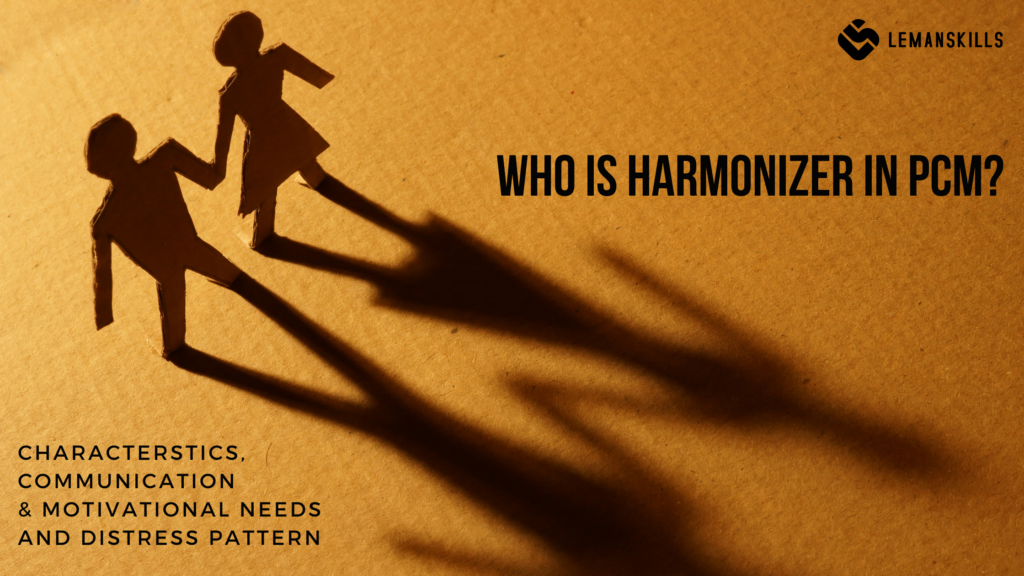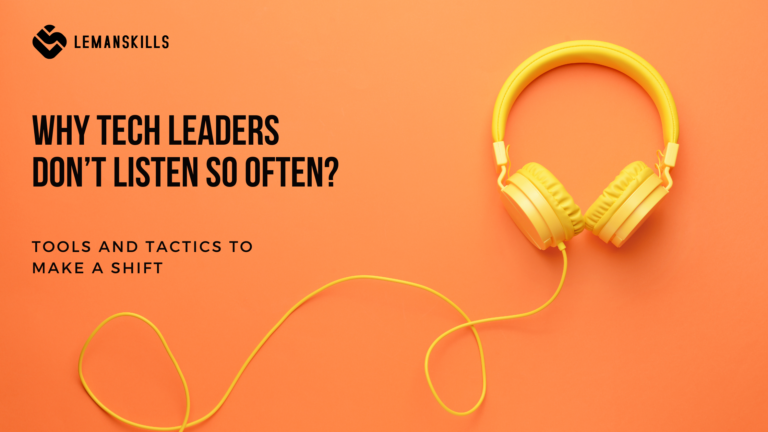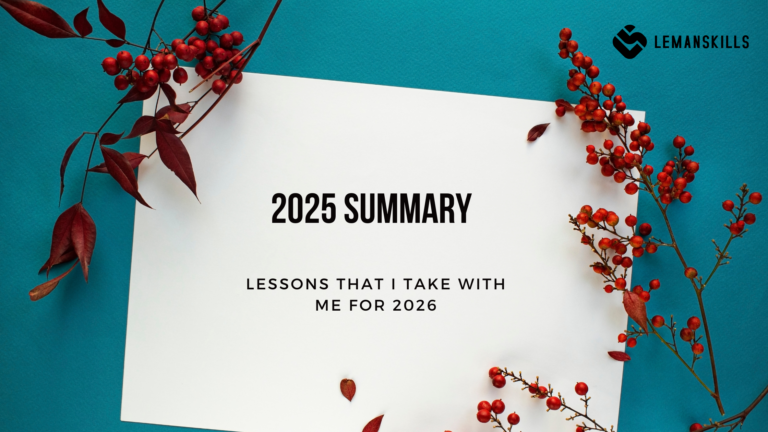Some people are focused on data, some on exchanging opinions. Some wants to have fun, and some want to stop talking and start doing.
And some are speaking emotions and take care of others. Do you know one or two people who are strong in that are?
That’s the Harmonizer.
The fifth out of six personality types in Process Communication Model. We’ve started the story about PCM HERE, then we’ve described Persister, Thinker, Promoter and Rebel.
Today we’re adding another piece to our PCM puzzle, so we understand different people once we meet them, have them as team members or stakeholders in different circumstances (professional and private). For those of us who has little Harmonizer energy, this one can appear like an extremely emotional person who can’t think logically. Why? Let’s unpack it today!
How do we recognize Harmonizer?
Harmonizer is a person who experience the world through the lens of emotions. Most of the time, they use their empathetic state: they have a very good and fast access to their emotional states, and they use this skill to map and understand it with others.
How to recognize a Harmonizer in the Base of personality? Again, the easiest way to make a strong hypothesis is to look for the key words that the person uses the most.
For Harmonizer it will be: “I feel”, “In my heart…”, “I love…”, “I am sad”, “I feel frustrated…”. They’ll use the whole spectrum of wording that describes emotional states.
They say all that because they want to connect with others, but differently than a Rebel who wants to connect with as many people as possible, to share reactions. Harmonizer wants to have meaningful relations, that are important for them: privately and at work as well. They take care of others, about the atmosphere in the team. When they see a micro conflict or even a symptom that one can appear, they do everything in their power to stop it. They remember about birthdays, taking charge of organizing gifts, birthday cards and all types of evidence that we care about each other.
The recognition of Harmonizer is also easier when we look on their non-verbal communication: most of the time their face is warm, with a lot of sighs of emotions on it. Their voice is soft, soothing, comforting. They lean heir body towards the other person while taking with them, using a moderate number of gestures to emphasize the support and care that emanates from their bodies.
If you see and hear it, that’s a strong indicator that there’s a Harmonizer in the Base on the other side of the communication process. How to use it to get along with that kind of person?
What does Harmonizer need in communication?
- The Harmonizer needs communication process where they have a chance to express their emotions. Extremely important for them as well is to have a space, where they can go into contact with others to build meaningful relations and to matter to people.
- To be efficient in communication with Harmonizer, we need to use nurturative channel of communication. It means that we need to reach to the comforting and caring level of our energy to open a conversation. That means that asking questions or directly saying what’s there to be done won’t work in Harmonizer’s case. How to do it? Using the same example as before: when we want to delegate a task, so a chosen employee covers it, the great approach will be opening the conversation with care first. “Hi Kate, thank you for finding out the time for us to talk. I know that lately it’s been hard, so I am grateful that we made it together. I’m going to take some things out of your plate and in exchange, I have a task that I feel will be a good fit for you.” Once they FEEL cared of, we have them on board to discuss the details (scope, deadline, support, required learning etc.).
- They value Benevolent interaction style. It means that they need care, meaningful relations within they feel that they belong, are needed and important part of a team or community. One of the worst things that we can do while getting in contact with Harmonizer is to be too directive, asking questions, in a high speed won’t work very well too. Yes, they need structure and clear contract on what’s there to be done and for when, but they need to be in comfort to work around it. They value relations over goals, so it’s crucial to remember about it while building an environment for them.
- Harmonizer seeks to answer the existential question: am I loved? It’s not always about the romantic love. It’s more about the feeling that we are important, needed, valued as people. That we matter for others. For them the following equation is the only truth.
I’m loved by others = I’m valuable as a person
- Two motivational needs attached to this PCM type are recognition of person and sensory. It’s important to know it, since when those needs are not met, Harmonizer goes into distress and loses access to their skills, abilities to think clearly. Recognition of person means that we are seen as people. Not for what we do, but who we are. It’s different than the recognition of work that we’ve seen in case of a Thinker or Persister. Instead of “good job” we say: “it’s good to have you here”. The sensory means that this person is experiencing the world by using their senses. The environment should be nice, pleasant, they like colorful clothes, comfortable, warm and soft. Listening music or other sounds that have a good impact on their mind and body. Experiencing the nature, having plants in the room. Each Harmonizer can need something a little different, but the key thing is that they feed their senses. That kind of environment will cover what’s the most important for Harmonizer so they can work at their best.
When do we know that Harmonizer is in distress?
Just a reminder: distress is negative stress, that costs us (and our environment) something. We are in distress when our motivational needs are frustrated and to cover them (in a really bizarre way), we into the distress sequence. How does is look like for a Harmonizer?
1. Driver: I need to please you (meaning: I’m OK only if I please you). On this level, Harmonizer often takes care of other peoples’ needs, forgetting about their own. They sometimes do it even if nobody asks, trying harder that it’s required by anyone. It happens quite often as well that they hesitate and have troubles in making decisions. When we see that kind of behavior, we can offer positive recognition of a person or sensory coverage will be a good idea. We can say “it’s so good to have you here!” or offer a cup of warm coffee should work. That kind of reaction will take Harmonizer out of the rabbit hole and get them back to OK-OK space.
2. Drooper Mask. Harmonizer wears a drooper mask on the second level of distress. They start making mistakes, are getting sloppy, sometimes things just fall from their hands or don’t work (i.e. technology). They tend to say: “oh my, I’m so stupid, I can’t do anything right.” They seek recognition of person and if they don’t get a positive one, they start to seek for a negative one (since it’s better than nothing). To “attract” negative attention, they might stop take care of themselves, get some weight, stop doing makeup or even wash themselves. When they do it, people tend to say: “OMG, what’s happening, you look terrible!”. As mentioned, it’s better to have a negative recognition, than none. What to do when we see it? Again, feed the needs in a positive way.
3. Cellar: At the end, Harmonizer is going into the mode: “Nobody loves me, nor wants me here. I could’ve not existed, and nobody will even notice”.
As you can see, being in distress is an algorithmic body and brain response to not having covered the motivational needs. This sequence is repetitive, happens every time that a person is triggered in any way. The whole sequence can last 30 seconds (literally) or can be longer. The more frequently we go through the whole path (3 steps), the more “coupons” we collect to pay them out.
That’s why it’s so important to stop the vicious cycle as soon as we realize that it starts: the sooner, the easier it will be. And remember that we can cover the needs on our own, but also, we can ask the people around us for support. We can make a little contract with people in our environment (private and work) that stands: “if you see that X and Y behavior is starting within myself, please react with a proper needs’ coverage. That way I will come back to myself faster, and nobody gets hurt”. It’s especially important on the Mask level, since when we are there, often we don’t think clearly, so it’s super hard for us to cover our own needs properly.
The bottom line
The Harmonizer is another meaningful and important player in a team. Especially when you need to build relations, a good atmosphere with a lot of psychological safety, where people can work at their best. Their beautiful hearts can create so much value in building mutual trust, engagement and belonging that it’s a shame not to use it, in a positive way.
We need to be aware that if we have a small amount of Harmonizer’s energy, we can perceive them as “soft”, “whiny” or without rational thinking abilities. And yes: they mostly use different part of their brains, but it doesn’t make them less important part of the puzzle. Let’s be mindful about that.
Of course, under stress it’s harder since the Harmonizer can withdraw, make mistakes, sometimes even hesitating so much that it’s impossible for them to think. But after getting over with that behavior and going into OK-OK zone, we can create an extraordinary value to create a team where people belong and feel seen.
That’s what the Harmonizer is for.




